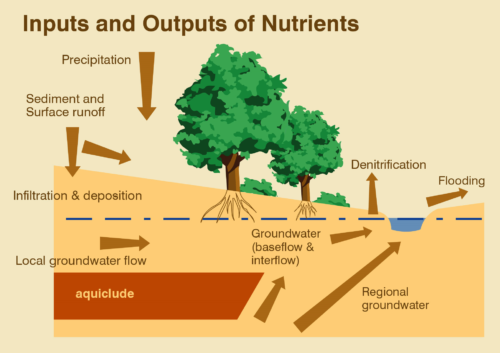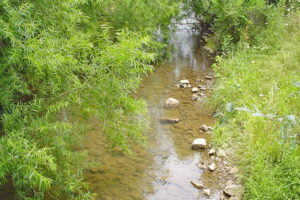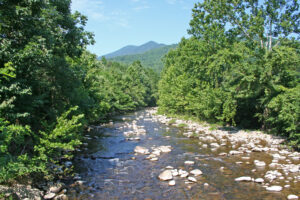People need access to clean, plentiful drinking water. As populations increase across the Commonwealth, public utilities must find ways to meet the needs of Virginians. You may not realize that the clean, clear water that comes out of your faucet most likely came from a forest. Almost half of Virginia’s surface drinking water comes from state and private forestlands within the Commonwealth. To protect our drinking supply long into the future, we need to conserve forests.
Public drinking water sources include rivers, streams, lakes, reservoirs, springs, and groundwater. But before it makes its way to your faucet, utilities need to first ensure the water is safe and drinkable to protect public health. This can mean investing in infrastructure to filter and treat water. Or it can mean investing in nature’s best, cheapest water purification system – forests.
When municipalities invest in protecting forested watersheds, they are taking advantage of the natural, essential processes of forests that result in clean water. Water runoff from hard surfaces carries along pollutants; trees filter out many of those pollutants and contaminants before they reach waterways. They act as buffers that absorb rainfall, slow stormwater flow, and refill groundwater aquifers. Their roots anchor soil, minimizing erosion and sedimentation.

Trees process water and pollutants into basic elements for growth.
Protecting Forests for Drinking Water
Keeping healthy forests intact helps to preserve and protect our drinking water supplies.
For decades, technology has replaced, the natural services provided by forests, but at a high price. Significant funds are dedicated to the construction and upgrades of water treatment plants to clean public water supplies degraded by pollution. Those funds can instead be invested in conserving watersheds and protecting our water sources from pollution.
There are numerous state and federal programs that support source water protection, such as the Environmental Protection Agency’s (EPA) Clean Water Act and Safe Drinking Water Act and the Virginia Department of Health’s (VDH) Source Water Protection Program.
Municipalities may decide to protect their water sources in a number of ways, such as conservation easements on critical lands or waters ordinances and zoning codes for protecting watersheds.
Local government officials make tough land-use decisions that have value to the environment even if they sacrifice economic benefits. Often the true value of good land use is unclear to the public, but letting the environment work for you is very cost effective. The financial value becomes clear when the costs of protecting an ecosystem for improved water quality are compared with investments in new or improved water treatment facilities.
These municipalities rely heavily on private landowners to protect watersheds. Sixty-eight percent of the drinking water that originates from state or private forestland comes from family-owned forests, much of which are working forests. Healthy, well-managed forests are essential to Virginia’s drinking water. VDOF works with landowners and loggers to protect watersheds and the Chesapeake Bay.
Read more about how forests protect water.
How You Can Help
If you’re a landowner, conserve and manage your forestland to protect water sources.
If you’re not a forest landowner, you can still help protect your drinking water supply.
- Minimize your use of lawn fertilizers and always dispose of chemicals properly to prevent them from polluting waterways.
- Replace turfed lawn and paved areas with native plants and woody vegetation. Read about rain gardens.
- Join watershed groups for tree planting and stream cleanups.
Learn more about why healthy forests are critical to the future of our drinking water.



